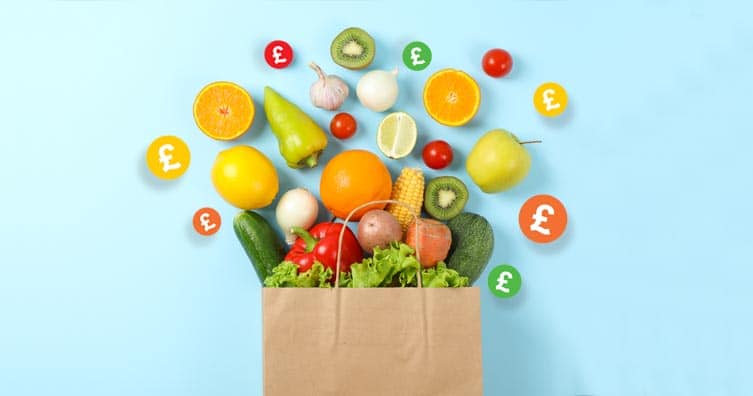In today’s economic climate, grocery bills can quickly add up, making it difficult to stick to a budget. Whether you’re trying to save money for other financial goals, such as paying off debt, building an emergency fund, or just making ends meet, cutting down on your grocery expenses is a great place to start. The good news is, that with a few smart strategies, you can reduce your grocery bills without sacrificing the quality of your meals or your overall health.
In this guide, we’ll dive into 15 budget-friendly shopping strategies to help you save money on groceries. These tips will teach you how to plan, shop smart, and make the most of what you already have.
1. Make a Weekly Meal Plan

One of the most effective ways to save money on groceries is by planning your meals ahead of time. Creating a weekly meal plan allows you to:
- Know exactly what you need for the week
- Avoid impulse purchases
- Reduce food waste
Start by checking your pantry, fridge, and freezer to see what ingredients you already have on hand. Then, plan meals that incorporate these items so that you buy fewer new groceries. Be sure to include breakfast, lunch, dinner, and snacks in your meal plan to cover all your meals for the week.
Once you’ve planned your meals, make a detailed grocery list with the exact ingredients you need. Sticking to this list while shopping will help you avoid unnecessary purchases.
Tip: Use the Same Ingredients Across Multiple Meals
To get the most out of your groceries, plan meals that use the same or similar ingredients. For example, if you’re making tacos one night, you can use the leftover tortillas for a wrap the next day. This prevents you from buying different ingredients for every meal and helps minimize waste.
2. Stick to a Grocery List
After creating your meal plan, it’s crucial to make a grocery list and stick to it. Your list should only include the items you need for the meals you’ve planned, as well as any household staples you’re running low on. Walking into the store without a list often leads to impulse buys and overspending.
Travel Tips for Stress-Free Vacations: How to Make the Most of Your Trip
If you see a good deal on something that’s not on your list but is something you use regularly, it’s okay to make an exception — but only if it fits within your budget.
Tip: Use a Grocery List App
There are several free apps available that make it easy to create and manage your grocery list. Many apps allow you to categorize items by section, which can help you avoid wandering through the aisles and picking up things you don’t need.
3. Shop the Sales
Taking advantage of sales and discounts is one of the easiest ways to save money on groceries. Most grocery stores release weekly circulars that advertise current promotions, so be sure to check these before heading to the store.
When you see staple items, like rice, pasta, canned goods, or frozen vegetables, on sale, stock up on them if you can. These non-perishable items have a long shelf life, and buying them in bulk when they’re discounted can save you money in the long run.
Tip: Sign Up for Loyalty Programs
Many grocery stores offer loyalty programs that give you access to exclusive discounts, coupons, and rewards. Signing up for these programs is usually free, and you can often earn points for every dollar you spend. Over time, these points can be redeemed for discounts on future purchases.
4. Buy in Bulk (When It Makes Sense)
Buying in bulk can save you money on groceries, but only if you do it strategically. Bulk buying works best for items that have a long shelf life or that you use frequently, such as rice, pasta, flour, canned goods, and household supplies like toilet paper or cleaning products.
However, be cautious when buying perishable items in bulk, such as fresh produce or dairy. If you can’t consume these items before they go bad, you’ll end up wasting money.
Tip: Join a Warehouse Club
Warehouse clubs like Costco or Sam’s Club offer bulk quantities of food at lower prices per unit. If you have the storage space and use these items regularly, investing in a membership can be worthwhile.
5. Use Coupons and Cashback Apps
Coupons are a classic way to save money on groceries, and thanks to digital platforms, they’re easier to use than ever before. Many stores have digital coupons you can clip from their website or app, while others allow you to load coupons directly onto your loyalty card.
In addition to coupons, cashback apps like Ibotta, Rakuten, and Checkout 51 allow you to earn money back on grocery purchases. Simply scan your receipt after shopping, and you’ll receive cashback for eligible items.
Tip: Double Up on Savings
You can often combine coupons with sales or cashback offers for maximum savings. For example, if a product is on sale and you have a coupon for it, use both to get the item at a significantly reduced price.
Declutter Your Home: Easy Tricks to Tidy Up and Stay Organized
6. Avoid Pre-Packaged and Processed Foods
Convenience comes at a cost, and pre-packaged and processed foods are often more expensive than making meals from scratch. Instead of buying pre-cut vegetables, shredded cheese, or pre-made meals, opt for whole ingredients that you can prepare yourself. Not only are whole ingredients more affordable, but they’re often healthier, too.
For example, a bag of pre-cut lettuce may cost twice as much as a whole head of lettuce. Similarly, buying a block of cheese and shredding it yourself is usually cheaper than buying pre-shredded cheese.
Tip: Prep Your Ingredients in Advance
To save time during the week, prep your ingredients ahead of time. Spend an hour or two washing and cutting fruits and vegetables, portioning out snacks, and marinating proteins. This way, you’ll still enjoy the convenience of ready-to-eat ingredients without paying extra.
7. Opt for Store Brands
Store brands, or private-label products, are often just as good as name brands but at a fraction of the price. Many store-brand products are manufactured by the same companies that produce the name-brand versions.
When shopping, compare the prices of store-brand items with their name-brand counterparts. You’ll often find that the store-brand option is significantly cheaper, and in most cases, you won’t notice a difference in quality or taste.
Tip: Read the Labels
Sometimes, store-brand products and name-brand products have different ingredients. Be sure to check the labels to ensure you’re getting the same quality for less.
8. Shop Seasonal and Local Produce
Buying fruits and vegetables that are in season is not only cheaper but also fresher and more flavorful. Out-of-season produce has to be shipped from far away, which increases its price. Stick to what’s in season and consider shopping at local farmers’ markets, where you can often find fresh, locally-grown produce at lower prices.
Tip: Freeze Extra Produce
If you find a great deal on seasonal produce, stock up and freeze the extras for later. This works well for fruits like berries and vegetables like spinach or bell peppers. Freezing allows you to take advantage of lower prices without worrying about spoilage.
9. Limit Trips to the Store
The more often you visit the grocery store, the more opportunities you have to overspend. By limiting your shopping trips to once a week, you can reduce impulse buys and better control your spending.
Before heading to the store, make sure you’ve planned out all your meals and snacks for the week and created a thorough grocery list. This way, you won’t find yourself running to the store for forgotten items.
Tip: Batch Cook and Freeze Meals
Batch cooking allows you to make large quantities of meals at once, saving time and reducing the number of grocery trips. For example, you can cook a big batch of soup, stew, or chilli and freeze the extra portions for future meals.
10. Don’t Shop When You’re Hungry
Shopping while hungry is one of the quickest ways to overspend on groceries. When you’re hungry, you’re more likely to buy unnecessary snacks or impulse items. To avoid this, eat a meal or snack before going to the store so you’re not tempted to buy more than you need.
Tip: Stay Focused at the Store
Stick to your grocery list and avoid wandering down aisles that aren’t relevant to your shopping needs. Staying focused on your list will help you avoid unnecessary purchases.
11. Shop at Discount Stores
Not all grocery stores are priced equally, and shopping at discount stores like Aldi or Lidl can help you save money. These stores often have lower overhead costs and carry store-brand products that are significantly cheaper than name brands.
While discount stores may not carry every item on your list, you can shop there for staple items like canned goods, grains, and dairy, then pick up special items at another store if necessary.
Tip: Compare Prices at Different Stores
Prices can vary widely from one store to another, so take the time to compare prices at different stores in your area. You may find that one store has better deals on meat and produce, while another has lower prices on pantry staples.
12. Cook at Home More Often
Dining out or ordering takeout is convenient, but it’s also expensive. By cooking at home more often, you can save a significant amount of money. Home-cooked meals are generally healthier, too, since you have control over the ingredients and portion sizes.
If you’re short on time during the week, consider batch cooking or using a slow cooker to make meal preparation easier.
Tip: Plan for Leftovers
Cooking larger meals and planning for leftovers can save both time and money. Leftovers can be eaten for lunch the next day or repurposed into new meals, reducing the need to buy more ingredients.



